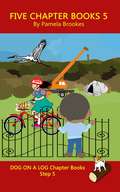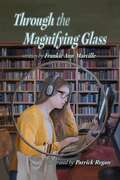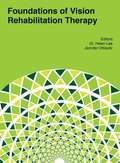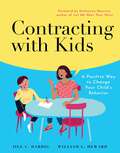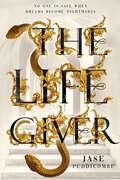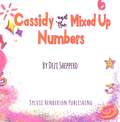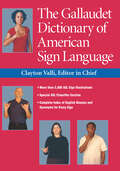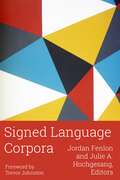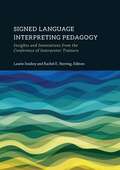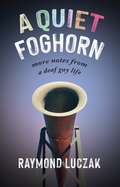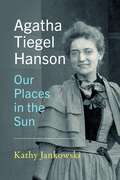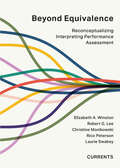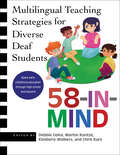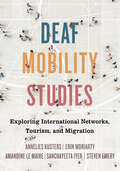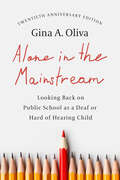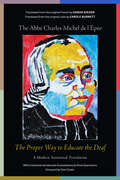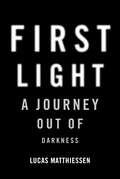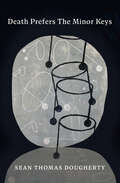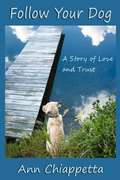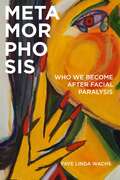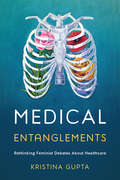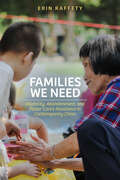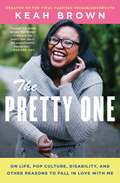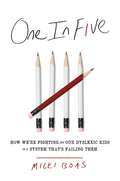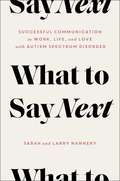- Table View
- List View
Five Chapter Books 5: Decodable Books for Phonics Readers and Dyslexia/Dyslexic Learners (DOG ON A LOG Chapter Book Collections #Volume 5)
by Pamela BrookesDecodable Chapter Books for Phonics Readers and folks with a Dyslexic Learning Style. <P><P>This collection is the five books in Step 5 of the DOG ON A LOG Chapter book series. <P><P>The books are: <P><P>Bake A Cake</br> The Crane At The Cave</br> Ride A Bike</br> Crane Or Crane?</br> The Swing Gate <P><P>Individual books can also be purchased separately. <P><P>Sight Words: </br> a, are, as, be, come, comes, could, do, does, egg, eggs, for, from, go, goes, has, have, he, her, here, his, I, into, is, me, my, of, OK, or, pull, pulls, put, puts, said, say, says, see, sees, she, should, talk, the, their, there, they, to, walk, walks, want, wants, was, we, what, where, would, you, your <P><P>Each book has about 1,000 to 1,190 total words <P><P>These are Step 5 Chapter books. <P><P>The DOG ON A LOG Books series are for phonics readers and folks with a dyslexic learning style. The words used reflect the inclusion of 1 to 3 new phonics rules in each step. There are five books at each step. <P><P>The chapter books are written in a chapter format with one picture in most chapters. They are longer, have more detail, and sometimes offer more complexity than the Let’s GO! Books. They’re great for practicing known and new phonics rules. They’re also just fun reading. <P><P>DOG ON A LOG Let’s GO! Books are shorter versions of DOG ON A LOG Chapter books. Let’s GO! books tell the same stories with about 8 pictures and only a few sentences per page. They’re perfect as an introduction to the new phonics rules or simply for fun reading for younger kids. <P><P>DOG ON A LOG Phonics Progression <P><P>Step 1: Consonants, primary sounds Short vowels Digraphs: ch, sh, th, wh, ck 2 and 3 sound words Possessive ‘s <P><P>Step 2: Bonus letters (f, l, s, z after short vowel) “all” –s suffix <P><P>Step 3: ang, ing, ong, ung, ank, ink, onk, unk <P><P>Step 4: Consonant Blends to make 4 sound words 3 and 4 sound words ending in –lk, -sk <P><P>Step 5: Digraph blends –nch to make 3 and 4 sound words Silent e, including "-ke" <P><P>Step 6: ild, old, olt, ind, ost <P><P>Step 7: 5 sounds in a closed syllable word plus suffix -s (crunch, slumps) 3 letter blends and up to 6 sounds in a closed syllable word (script, spring) <P><P>Step 8: Two syllable words with 2 closed syllables, not blends (sunset, chicken, unfit) <P><P>WATCH FOR MORE STEPS AND BOOKS COMING SOON <P><P>For information on upcoming books see dogonalogbooks.com or visit our Facebook page.
Through the Magnifying Glass
by Frankie Ann Marcille Patrick ReganJulia is just your average middle schooler. She loves spending time with her family and friends, reading, and listening to music or podcasts. She especially loves listening to old-school Sherlock Holmes radio shows on YouTube. But Julia doesn't feel like everyone else. Having a vision impairment sometimes makes her feel like she doesn't fit in anywhere. She's not totally blind, but she's not sighted either. Her family and teachers for the blind encourage her to use adaptive devices, like a white cane, or assistive technology, like a screen reader, to help her, but Julia has no interest. She wants to be just like everyone else, specifically her older brother, John, the town hero, most popular guy in high school, mystery-solving, John.
Foundations of Vision Rehabilitation Therapy
by Helen Lee Jennifer OttowitzFoundations of Vision Rehabilitation Therapy continues the legacy of Paul Ponchillia and Sue Ponchillia's seminal work Foundations of Rehabilitation Teaching with Persons Who Are Blind or Visually Impaired. After it was published in 1996, that book quickly established itself as an essential reference for vision rehabilitation professionals. Foundations of Vision Rehabilitation Therapy builds on that important work, reflecting changes in terminology and technology, while also incorporating best practices based on the past decades of evidence. It reflects the contemporary understanding of adult learning and skill building, providing proven techniques to help people with visual impairments develop skills and gain confidence that will equip them to lead independent, fulfilling lives.
Contracting with Kids: A Positive Way to Change Your Child's Behavior
by Jill C. Dardig William L. Heward"Colorful and easy to implement, this book will be a resource for parents and guardians looking to try behavior contracting in their homes." —Library Journal When a child is struggling with a behavior challenge or wants to learn a new skill, a contract can be a surprisingly effective solution that leads to more peaceful family dynamics. To help families create contracts as a collaborative process, Contracting with Kids offers an innovative combination of how-to text for parents and illustrated stories for children. Contracting with Kids describes a straightforward, four-step solution called behavioral contracting, a research-based technique with proven real-world success. Contracts are a tool that can benefit anyone, but they&’re particularly useful for: Autistic children Children with learning or developmental disabilities Children who benefit from clear expectations and receiving positive feedback and rewards The book&’s beautifully illustrated stories show a diverse group of families using contracts to address common problems such as: Completing chores or homework Getting along with siblings Becoming independent Achieving personal goals Questions after each story are designed to spark age-appropriate discussions. Sample contracting forms and supporting materials are provided in the book and also on a companion website.
The Life-Giver
by Jase PuddincombeFor fans of Samantha Shannon’s THE PRIORY OF THE ORANGE TREE comes THE LIFE-GIVER, an exciting new LGBTQ fantasy from Jase Puddicombe. The Dreamers are untouchable. Protected by the Sun God who speaks to them through their dreams, the Life-Giver, they live away from society and are only seen by their Scribes. But now someone—or something—is attacking them. The Council tried to blame the Life-Giver, but Dreamer Annelie and her Scribe Lyam know better. They learn that danger is buried deep in the heart of the Council itself, threatening their peaceful way of life. Forced to team up with Enoch, a mysterious man who talks in riddles, the trio must race against time to save their underground city from corruption—before their world crumbles around them.
Cassidy and the Mixed Up Numbers
by Dezi ShepperdBeing a new student at school can be a big deal even when you are in kindergarten. It’s Cassidy’s first day at a new school and she is a little nervous. Will she be able to keep up with her classmates or will her learning disability get in her way? Follow her first few days as she finds her confidence and voice in kindergarten.
The Gallaudet Dictionary of American Sign Language
by Peggy Swartzel Lott Daniel Renner Rob HillsCreated by an unparalleled board of experts led by renowned ASL linguist and poet Clayton Valli, The Gallaudet Dictionary of American Sign Language contains over 3,000 illustrations. Each sign illustration, including depictions of fingerspelling when appropriate, incorporates a complete list of English synonyms. A full, alphabetized English index enables users to cross-reference words and signs throughout the entire volume. The comprehensive introduction lays the groundwork for learning ASL by explaining in plain language the workings of ASL syntax and structure. It also offers examples of idioms and describes the antecedents of ASL, its place in the Deaf community, and its meaning in Deaf culture. This extraordinary reference also provides a special section on ASL classifiers and their use. Readers will find complete descriptions of the various classifiers and examples of how to use these integral facets of ASL. The Gallaudet Dictionary of American Sign Language is an outstanding ASL reference for all instructors, students, and users of ASL. *Please note that this paperback edition does not include the DVD found in the hardcover edition.
Signed Language Corpora (Gallaudet Sociolinguistics #25)
by Jordan Fenlon Julie A. HochgesangJordan Fenlon and Julie A. Hochgesang present a revolutionary contribution to the field of signed language linguistics with Signed Language Corpora, the first volume to provide a comprehensive overview of the creation, development, and use of signed language corpora. This work will advance discussions on corpus linguistics as a methodology and its place in signed language linguistics research. The ability to search corpora to obtain information about the frequency of patterns in language is an important step forward for signed language research. Access to large datasets will expand scholarly understandings of signed language structure in ways never before possible. Through reflective discussions on the processes of creating, using, and utilizing corpora, the editors and contributors hope that other linguists will be inspired to take similar steps. The descriptions provided in this book have been written to provide a framework for those eager to develop or make use of signed language corpora for their respective signed language varieties. Creating signed language corpora is significant not only for linguistic research, but for the long-term preservation of collected texts that include the stories and histories of signed language communities. Additional areas of focus include the use of signed language corpora in applied settings, the ethics of working with signed language communities, and the future of this methodology in research.
Signed Language Interpreting Pedagogy: Insights and Innovations from the Conference of Interpreter Trainers (The Interpreter Education Series #13)
by Laurie Swabey Rachel E. HerringFor over forty years, the Conference of Interpreter Trainers has provided opportunities for advancing teaching and learning in interpreter education. This volume highlights fifteen seminal papers from past conference proceedings, along with newly written responses to the selected papers. Many of the new contributions are co-written by the author of the original paper and one or more emerging scholars, giving readers a historical lens on how the field of signed language interpreting pedagogy has evolved. The volume also calls attention to issues with which the field must urgently contend, such as implementing a Deaf-centric approach, multicultural interpreting curricula, the recruitment and retention of African American/Black students, and social justice. The contributors explore other important topics in interpreter education including ethics, Deaf translation, performance evaluation, consecutive and simultaneous interpreting, discourse analysis, critical thinking, curriculum sequencing, the social construction of learning, and mentoring. Through this collaborative approach featuring more than thirty scholars, Signed Language Interpreting Pedagogy presents a wealth of theoretical and practical information for interpreter educators and their students.
A Quiet Foghorn: More Notes from a Deaf Gay Life
by Raymond LuczakIn this collection of essays, Raymond Luczak once again offers readers powerful and deeply personal reflections on his experiences as a Deaf gay man. He begins his journey with the printed word where lipreading is not required, and discovers a family of sorts through the writings of Walt Whitman and others; he ventures deeper into the queer community with thoughts on ageism, disability, and radical faeries. Luczak explores the many nuances within the Deaf community and the audist attitudes of hearing people, particularly in the media, and takes a detour into ASL gloss poetry. He speculates on what the Deaf community will look like a century from now and ends with a long bike ride that celebrates the ongoing questions of being a Deaf gay man.
Agatha Tiegel Hanson: Our Places in the Sun
by Kathy JankowskiAgatha Tiegel Hanson (1873-1959) is regarded as a seminal figure in Deaf history for her writing, advocacy, and leadership, though her accomplishments merit recognition within the larger context of American history as well. Barely fifteen years old in 1888, Tiegel Hanson became one of the first women to attend the nation's only college for Deaf students, the National Deaf-Mute College, now known as Gallaudet University. Amid the hostility and skepticism of male students and faculty, she achieved exemplary academic success and was the first woman to earn a Bachelor of Arts degree from the college. Upon facing stringent campus restrictions and exclusion from male-only organizations and activities, Tiegel Hanson cofounded a society for female students. Her prerequisite graduation presentation, "The Intellect of Woman," was a powerful oratory that urged women to “move on till all barriers crumble and fall.” Throughout her life, Agatha Tiegel Hanson worked to advance the rights of Deaf people and women, and she was a passionate advocate of sign language rights. Her contributions include creative written works as well as influential treatises. She served in leadership positions at several Deaf organizations and, along with her husband, noted Deaf architect Olof Hanson, she played a vital role in the Deaf cultural life of the time. In Agatha Tiegel Hanson: Our Places in the Sun, author Kathy Jankowski presents a portrait of this trailblazer, and celebrates her impact on the Deaf community and beyond. This biography will be of interest to those already familiar with Tiegel Hanson’s legacy as well as to readers who are discovering her extraordinary life for the first time.
Beyond Equivalence: Reconceptualizing Interpreting Performance Assessment
by Elizabeth A. Winston Robert G. Lee Christine Monikowski Rico Peterson Laurie SwabeyThere is a longstanding need for valid, reliable measurements of interpreting competence. Although rubrics and checklists are commonly used in both academic and employment settings, a review of available rubrics indicates that many do not focus on interpreting performance. Traditional metrics for sign language interpreting often conflate language proficiency with interpreting proficiency. Conflating fundamental aspects of language in use—vocabulary, grammar, and prosody— with fundamental aspects of interpretation—content, intent, and monitoring—compromises the valid assessment of interpreting proficiency. Beyond Equivalence: Reconceptualizing Interpreting Performance Assessment argues for a shift toward more nuanced and evidence-based conceptualizations of interpreting, communication, and meaning to improve the creation and use of rubrics for assessment in interpreter education, certification, and professional development. This inaugural volume in the Currents series introduces a rubric and accompanying scale, which can be used to assess both simultaneous and consecutive interpreting performance in terms of both process and product, in both signed and spoken language interpreting, and in a variety of settings. Beyond Equivalence offers an appreciation of the multivarious nature of meaning in the interpreting process and presents a new paradigm for the measurement of interpreting proficiency.
58-IN-MIND: Multilingual Teaching Strategies for Diverse Deaf Students
by Debbie Golos; Marlon Kuntze; Kimberly Wolbers; Chris KurzA highly practical and engaging resource for current and future teachers, 58-IN-MIND describes and demonstrates theoretically-driven, research-based, and classroom-tested best practices for using American Sign Language and English in instruction across the curriculum. The multilingual and multimodal instructional strategies presented here are embedded in approaches that aid learning and foster well-being. This book will support teachers in creating meaningful educational experiences for Deaf students in all grades, from early childhood education through high school. Each chapter is written by a team of researchers and P–12 teachers with at least one Deaf coauthor. With seventy-five percent of the authors being Deaf, this is the first teaching methods book to harness the expertise of Deaf professionals at this level, highlighting their vital role in Deaf education and in shaping inclusive and effective learning environments. This book meets the need for a resource that recognizes the diversity of Deaf students by creating space in the classroom to honor their home/heritage languages, cultures, races, genders, abilities, hearing levels, and other multiple and intersecting identities. Written in a conversational tone, the book includes core recommendations for instruction of the targeted subject area, examples of key strategies, lessons and real stories from those working in the field, suggestions for practice, and recommended resources. “58-IN-MIND” in the title refers to the version of the ASL sign "stick" that is made on the forehead, which is equivalent to the English idiom “to stick in one's mind.” As in, when students learn in a culturally responsive manner, the learning is likely to stick. The title also alludes indirectly to the collective aspirations of the chapter authors that the practices discussed in the book will also stick in the readers’ minds, and thus have a transformative impact on the way Deaf students are taught.
Deaf Mobility Studies: Exploring International Networks, Tourism, and Migration
by Erin Moriarty Annelies Kusters Amandine le Maire Sanchayeeta Iyer Steven EmeryDeaf Mobility Studies revolutionizes how we think about deaf people’s international experiences. Equipped with a common theoretical framework, a team of five deaf ethnographers journeyed alongside their participants to delve into a rich array of experiences — ranging from career advancements and marriages to tourism and the challenges faced by deaf refugees. The authors present their findings within the framework of Deaf Mobility Studies, which brings together the transdisciplinary fields of Deaf Studies and Mobility Studies. Far from taking 'deaf cosmopolitanism' as a given, this work scrutinizes it as a multifaceted phenomenon to be both affirmed and questioned. Themes that emerge include how deaf people seek spaces of belonging, engage in languaging, expand their networks, and experience immobility. The text is augmented by direct links to clips in nine ethnographic films, analysis of selected film excerpts and screenshots, and compelling data visualizations. Deaf Mobility Studies is an expansive odyssey through the complexities and opportunities inherent in deaf international mobility.
Alone in the Mainstream: Looking Back on Public School as a Deaf or Hard of Hearing Child (Deaf Lives #14)
by Gina A. OlivaIn 1975, federal legislation initiated drastic changes in the education of deaf and hard of hearing children. Public Law 94-142, later known as IDEA, proposed to provide the “Least Restrictive Environment” for all such children. In the years since, advocates for deaf and hard of hearing children have raised the alarm that mainstream educational settings can cause language and social deprivation for these children. In Alone in the Mainstream, author Gina A. Oliva documents her experience as a “solitaire,” the only deaf or hard of hearing student in her school. Oliva felt alone because she couldn’t communicate easily with her classmates and because she had no peers who shared a similar experience. As an adult, when she began her career at Gallaudet University, she realized that she wasn’t alone and that her experience was widely shared with other mainstreamed students. She decided to write about this commonality and invited other solitaires to reflect on their own experiences in emails and essays. Collective themes of isolation, low expectations, and low self-esteem emerged. Alone in the Mainstream blends Oliva’s personal narrative with the reflections of sixty other solitaires and makes the case that deaf and hard of hearing children need each other. This twentieth anniversary edition is a reminder that little has changed for deaf and hard of hearing students in public school settings. Oliva brings this new edition up to date with observations, resources, and discussion questions that accompany her appeal for all deaf and hard of hearing children and their families to have access to sign language, to develop a deaf identity, and to be part of a deaf community.
The Proper Way to Educate the Deaf: A Modern Annotated Translation
by The Abbé de l’EpéeThis volume presents the first complete English translation of the Abbé de l’Épée’s seminal work describing his methodology for educating deaf children. Originally published in French in 1798, this modern annotated edition offers readers a translation that is documentary in scope and that reflects historic attitudes toward deaf people and deaf education while maintaining the conventions of contemporary English. De l’Épée provides an anecdotal account of his methods and philosophy for educating deaf children using a sign system based on the French Sign Language of the era but adapted to visually represent the linguistic features of spoken and written French. His work laid the foundation for the use of the “manual method,” or sign language, in deaf education. One section of the text, originally published in Latin, outlines the intellectual clash between de l’Épée and Samuel Heinicke, an early proponent of oral education who contested the use of sign language. De l’Épée’s text holds significant cultural and historical value for the fields of deaf studies and deaf education. This English language translation reveals de l’Épée’s own story of how he came to be known as the “father of the deaf” and is enriched by scholarly contributions that provide essential historical context and a framework for modern understanding.
First Light: A Journey Out of Darkness
by Lucas MatthiessenA deeply felt literary memoir of one man&’s journey to redemption through vision loss, alcoholism, and the burden of a family legacy. Born to the author Peter Matthiessen, young Lucas traveled through life believing himself a disappointment to his famous father. From an early age, Lucas was exposed to the fanciful ideas of his parent&’s group of renowned bohemians as well as to their addictive pastimes. Within the shadow of his father&’s professional success came another source of darkness—the deterioration of Lucas&’s vision from retinitis pigmentosa. With blindness looming imminently, Lucas spirals downward, unsure of how to turn his degree in English Literature into a job and relying more and more on alcohol. As Lucas&’ drinking and eyesight worsen, so too do his interpersonal relationships and first career in publishing.First Light is a memoir of loss and learning. By pulling himself out of addiction and accepting that he will lose his sight completely, Lucas transitions from being &“the son of&” someone famous to an individual with his own strong sense of self. Despite continued personal tragedies, Lucas develops a second sight that is aimed inward, laying his triumphs and failures bare.With great honesty, Lucas Matthiessen creates a vivid portrait of self-destruction and rebirth, which is, above all, a vision of hope.
Death Prefers the Minor Keys
by Sean Thomas DoughertyIn his twentieth book, most of which was first composed on the backs of medical forms while on break as a third-shift medical technician, Sean Thomas Dougherty brings us a memoir-like prose sequence reflecting on disability, chronic illness, addiction, survival, love, and parenthood. In Death Prefers the Minor Keys, Dougherty offers the reader collaged prose poems, stories and essays full of dreams, metaphors, aphorisms, parables and narratives of his work as a caregiver. Moving portraits of Dougherty’s residents, a series of letters to Death, invocations of Jewish ancestry through the photography of Roman Vishniac, imaginary treatments for brain injuries, and half translated short stories of lives both real and imagined populate this collection. Through these, Dougherty engages issues of labor, the ontology of disability, and the mysticism of life. Death Prefers the Minor Keys is most of all a kind of love letter to Dougherty’s wife, and her courage and complicity in the face of long-term illness and addiction. Ultimately, we see how the antidote to despair can reside in daily acts of caring for other human beings.
Follow Your Dog: A Story of Love and Trust
by Ann ChiappettaWhat, exactly, does it mean to share one’s life with a guide dog? While there is practical merit to the human-canine bond, which developed over a period of 70,000 years, it’s not akin to any other human-animal relationship. It is unique. The person and guide dog are interdependent, and the bond of mutual trust is what makes the partnership successful and fulfilling for both. Ask yourself how many people you would trust with your life, and after answering, ask yourself if you would trust an animal with your life. Unless you are bonded to and live with a working dog, you might hesitate in answering the second question. To be sure, guide dogs have performed many heroic tasks and have saved handlers from innumerable dangers. However, there are smaller and subtler things that can mean so very much: the feel of your dog’s head on a foot while riding the bus, the whimpers and doggie dreaming, the way you and the dog move in sync when walking down the street, and countless other tokens of trust and affection. With this book, I hope to take the reader on a journey of understanding: learning what it’s like to overcome the darker side of disability by walking the path of independence with a canine partner. Ann Chiappetta Ann Chiappetta, M.S., lives in New Rochelle, NY with her husband, daughter, and assorted pets. She works as a readjustment counseling therapist for the Department of Veterans Affairs. Her poems, articles, and short fiction have appeared in numerous online and print publications. Her first book was Upwelling: Poems © 2016. Book website: http://www.dldbooks.com/annchiappetta/ Personal website: http://www.annchiappetta.com/ Blog: www.thought-wheel.com
Metamorphosis: Who We Become after Facial Paralysis
by Faye Linda WachsLosing her smile to synkinesis after unresolved Bell’s palsy changed how Faye Linda Wachs was seen by others and her internal experience of self. In Metamorphosis, interviewing over one hundred people with acquired facial difference challenged her presumptions about identity, disability, and lived experience. Participants described microaggressions, internalizations, and minimalizations and their impact on identity. Heartbreakingly, synkinesis disrupts the ability to have shared moments. When one experiences spontaneous emotion, wrong nerves trigger misfeel and misperception by others. One is misread by others and receives confusing internal information. Communication of and to the self is irrevocably damaged. Wachs describes the experience as a social disability. People found a host of creative ways to reinvigorate their sense of self and self-expression. Like so many she interviewed, Wachs experiences a process of change and growth as she is challenged to think more deeply about ableism, identity, and who she wants to be.
Medical Entanglements: Rethinking Feminist Debates about Healthcare
by Kristina GuptaMedical Entanglements uses intersectional feminist, queer, and crip theory to move beyond “for or against” approaches to medical intervention. Using a series of case studies – sex-confirmation surgery, pharmaceutical treatments for sexual dissatisfaction, and weight loss interventions – the book argues that, because of systemic inequality, most mainstream medical interventions will simultaneously reinforce social inequality and alleviate some individual suffering. The book demonstrates that there is no way to think ourselves out of this conundrum as the contradictions are a product of unjust systems. Thus, Gupta argues that feminist activists and theorists should allow individuals to choose whether to use a particular intervention, while directing their social justice efforts at dismantling systems of oppression and at ensuring that all people, regardless of race, gender, sexuality, class, or ability, have access to the basic resources required to flourish.
Families We Need: Disability, Abandonment, and Foster Care’s Resistance in Contemporary China
by Erin RaffetySet in the remote, mountainous Guangxi Autonomous Region and based on ethnographic fieldwork, Families We Need traces the movement of three Chinese foster children, Dengrong, Pei Pei, and Meili, from the state orphanage into the humble, foster homes of Auntie Li, Auntie Ma, and Auntie Huang. Traversing the geography of Guangxi, from the modern capital Nanning where Pei Pei and Meili reside, to the small farming village several hours away where Dengrong is placed, this ethnography details the hardships of social abandonment for disabled children and disenfranchised, older women in China, while also analyzing the state’s efforts to cope with such marginal populations and incorporate them into China’s modern future. The book argues that Chinese foster families perform necessary, invisible service to the Chinese state and intercountry adoption, yet the bonds they form also resist such forces, exposing the inequalities, privilege, and ableism at the heart of global family making.
The Pretty One: On Life, Pop Culture, Disability, and Other Reasons to Fall in Love with Me
by Keah BrownFrom the disability rights advocate and creator of the #DisabledAndCute viral campaign, a thoughtful, inspiring, and charming collection of essays exploring what it means to be black and disabled in a mostly able-bodied white America. Keah Brown loves herself, but that hadn&’t always been the case. Born with cerebral palsy, her greatest desire used to be normalcy and refuge from the steady stream of self-hate society strengthened inside her. But after years of introspection and reaching out to others in her community, she has reclaimed herself and changed her perspective.In The Pretty One, Brown gives a contemporary and relatable voice to the disabled—so often portrayed as mute, weak, or isolated. With clear, fresh, and light-hearted prose, these essays explore everything from her relationship with her able-bodied identical twin (called &“the pretty one&” by friends) to navigating romance; her deep affinity for all things pop culture—and her disappointment with the media&’s distorted view of disability; and her declaration of self-love with the viral hashtag #DisabledAndCute.By &“smashing stigmas, empowering her community, and celebrating herself&” (Teen Vogue), Brown and The Pretty One aims to expand the conversation about disability and inspire self-love for people of all backgrounds.
One in Five: How We're Fighting for Our Dyslexic Kids in a System That's Failing Them
by Micki BoasPractical tips and advice for parents navigating the school system from a mom who&’s been there.One in five children have dyslexia, but too many parents feel isolated and defeated in their efforts to secure an equal chance for their children. After fighting the school system for four years to get the correct diagnoses and proper learning assistance for her two dyslexic sons, Micki Boas realized that parents need to hack the system, cutting through the invisible red tape of school funding, IEPs, specialized teacher training, and more. Drawing on insights from over 200 parents, educators, and experts, Boas delves into: -When children need to be diagnosed to get the help they need—and why it doesn&’t always happen -What special education programs are mandated by law—and why most schools fail to provide them -What parents can do to advocate for their children—and help change the larger system One in Five shares the secrets the &“professionals&” won&’t tell you—but that makes all the difference.
What to Say Next: Successful Communication in Work, Life, and Love—with Autism Spectrum Disorder
by Sarah Nannery Larry NanneryUsing her personal experience living as a professional woman with Autism Spectrum Disorder, Sarah Nannery, together with her husband, Larry, offers this timely communication guide for anyone on the Autism spectrum looking to successfully navigate work, life, and love. When Sarah Nannery got her first job at a small nonprofit, she thought she knew exactly what it would take to advance. But soon she realized that even with hard work and conscientiousness, she was missing key meanings and messages embedded in her colleagues&’ everyday requests, feedback, and praise. She had long realized her brain operated differently than others, but now she knew for sure: she had Autism Spectrum Disorder (ASD). With help from her neurotypical partner—now husband—Larry, mostly in frantic IM chats, Sarah rose to Director of Development at one of the world&’s largest nonprofits. Together they have tackled challenges in how Sarah navigates personal and professional relationships, how they navigate marriage and parenthood, all of which are differently challenging for someone with ASD. But she wonders, at times, how life would be different if she&’d had to figure it all out herself. So, in What to Say Next, she offers advice, empathy, and straightforward strategies from her own tool-kit—not only for others who see the world differently, but for their families, partners and colleagues. In What to Say Next, Sarah breaks down everyday situations—the chat in the break room, the last-minute meeting, the unexpected run-in—in granular detail, explaining not only how to understand the goals of others, but also how to frame your own. Larry adds his thoughts from a neurotypical perspective, sharing what was going on in his brain and how he learned to listen and enlighten, while supporting and maintaining Sarah&’s voice. At a time when more and more people are being diagnosed with ASD—especially women and girls—this book tells important truths about what it takes to make it in a neurotypical world, and still be true to yourself.
